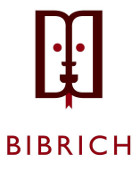Summary
Building Intercultural Bridges Through Children’s Literature Translations: Texts, Contexts and Strategies
BIBRICH UIP-2014-09-9823 set
The project aims to depict and explain the role and status of translated books in Croatian children’s literature, to describe trends in a historical perspective, and to establish and interpret the adopted translation strategies. The project focuses on translations of narrative fiction into and from Croatian over a span of a hundred years, i.e. in the 20th century. International scholarship in the field of children’s literature has recently turned towards comparative children’s literature, focusing on translation, intercultural transfer and contacts among languages and cultures. In so doing, it intersects with recent trends in translation studies in general, and in particular with its descriptive translation studies branch. According to O’Sullivan, a major task for the study of translations of children’s literature is for each language and culture to set “translations into their language in context, constructing a systematic and historical survey of the various strategies, tendencies, criteria of selection and methods employed” (2005: 24). This project establishes a team of researchers who aim to develop such an area of research in Croatia, setting research standards and fine-tuning appropriate methodology. The project focuses on two closely related sets of objectives. First, the corpus is outlined by means of assembling a bibliography of translated children’s books and crossover texts from and into Croatian. Collected data are analysed and interpreted with respect to the source and intermediary languages, to historical trends, to book selection criteria relative to the canon of children’s literature, to publishing practices, etc. Trends such as the adoption of translated texts into the target culture through adaptations, parallel publications, and political and cultural constraints are also considered and explained. The second set of goals concerns analysing individual translated texts in order to reveal translation strategies and make inferences about translation, publishing and reader practices in wider literary, historical, ideological, educational and cultural contexts. The researchers focus on uncovering translation norms and domestication strategies. The project is a novel contribution to an already established field of research, as it provides a Croatian perspective and renders new knowledge. The results are relevant to both Croatian and international children’s literature scholarship.
The project is funded by the Croatian Science Foundation.
Goals
I. Outlining the corpus and establishing the scope of research, recording the translations of narrative fiction that belong to the literary systems of children’s literature, young adult literature and related crossover texts, published in book form during the 20th century; in particular:
- assembling a bibliography of translated children’s books and crossover texts from parallel literary systems adopted by child readers (young adult literature, popular literature, adult literature);
- establishing translation flows and trends by analysing the bibliography of Croatian translations with respect to:
- represented and dominant source languages (including intermediary languages of relay translations);
- historical trends;
- selection of translated books and represented children’s classics;
- genres;
- publishing practices;
- establishing translation flows and trends by analysing the bibliography of translations of Croatian narrative fiction into other languages with respect to the selection of texts to be translated and contexts of their appearance;
- describing the Croatian reception of children’s literature from other cultures, including:
- influences of the translated texts on the poetics and development of Croatian children’s literature, its canon, topics and genres;
- the adoption of source narratives through adaptations;
- the consideration of translated texts in secondary sources;
- translated literature in the educational context;
- reading practices and trends.
II Analyses of individual translation texts at various levels of discourse (case studies):
- establishing translation norms and translation strategies (including the levels of adaptation), by analysing selected examples of translated children’s books, in particular with respect to:
- linguistic aspects;
- narrative aspects, including narrative communication;
- cultural and intercultural aspects;
- intertextual aspects;
- intermediality;
- paratexts.




